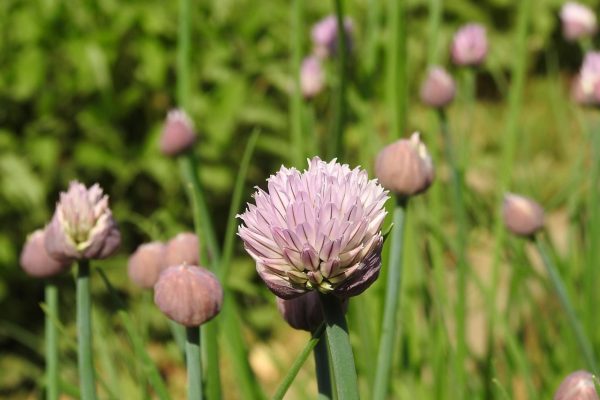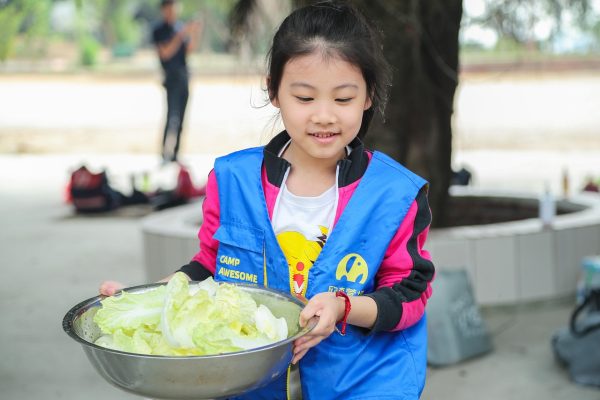Talya’s journey to womanhood began with her dream. The dream was scary, intense, and explosive. Graphic and powerful, her deepest inner wisdom was speaking:
My friend’s Bar Mitzvah party was at my house. All my friends were there. Outside I could see the moon. There was an eclipse. Black blobs of sky were forming around the moon. I went into the kitchen to the sink where mom and her friend were washing dishes, and said: “I’m scared—tell me the truth. What is happening?” Mom said, “Eugene [our hometown] is going to blow up and there is no time to escape.” I remember that my friend’s velvet, satin tefillin bag was on display. Then I woke up from the dream.
At school that day it happened: Talya’s moon time began. Talya, the oldest of our two daughters, is eleven and a half years old. Excited and gleeful, she bounded up to her dad in the afternoon to proudly share her news. And I began to think of creating a sacred ceremony to usher her gracefully into this next level of being.
Rosh Chodesh was approaching in a few days, and it seemed the perfect time for gathering together to share and celebrate Talya’s womanness in a Jewish ritual. The waxing and waning of the moon has long been regarded as a symbol of women’s changing bodies: as the moon and the oceans flow, so, too, do women’s bodies.
Tenderly, I broached the idea with Talya, fearing that her natural shyness might inhibit her. However, to my pleasant surprise, she agreed to the idea of a welcoming ritual and drew up a list of friends to invite — three close, lifelong girlfriends, their mothers, and a few other women with whom she would feel safe. Each person was asked to bring a flower and an offering of their own choice.
I quickly scanned all of my books on Jewish ritual and found only one which included a model ritual appropriate for this occasion: “Birkat HaNeetzan —Blessing the Blossom.” It is a girl’s initiation ritual described in Elizabeth Resnick Levine’s, A Ceremonies Sampler: New Rites, Celebrations and Observances for Jewish Women, published by the Women’s Institute for Continuing Jewish Education. Using this ceremony as a reference, I created a ritual for my daughter.
In the ceremony, I wanted to capture qualities of empowerment, pride, spiritual development, Jewish teachings, feminist teachings, and a sense of love and womanly wisdom. I hoped we could bestow a sense of awe and specialness, as well as connectedness to the flow of the universe. The mystery of creation is forever made new as the silver sliver of the Rosh Chodesh moon miraculously reappears each month. Each woman’s cycle brings forth the potential fruit of creation as an offering of life’s possibilities. It is a special honor that we carry as women, bearers of creation. Yet our everyday, modern life often jettisons us past recognizing this profundity.
On Rosh Chodesh, evening, a few days after her first period began, we gathered around our table. Candles were lit, and the Shehechianu blessing was recited in the feminine form. We each took turns, ushering into our circle the names of mothers, grandmothers, and other women friends. Each person offered a flower, one by one interweaving it into a braided fabric “crown” I had made, which was then placed on Talya’s head.
A special kiddush cup was filled with red raspberry and grape juice, fruits of the vine. Around the circle the “simcha cup” was passed, a sacred goblet that has been used at over a hundred Jewish life-cycle ceremonies among our community of extended friends. As each girl or woman held the cup, they offered their own unique blessing for Talya’s blossoming. And together we chanted the Hebrew blessing over the fruit of the vine.
A ritual pouch was filled with individual offerings for the newly menstruating young woman, including gifts of seashells, crystals, earrings with moons, and angel cards. Songs and drums filled the air, and stories were shared by those who had gone before on this path of womanhood.
A sweet glow of happiness was reflected on my daughter’s face, and the girls all seemed to cherish the specialness of the event, although bringing a bit of nervous giggling energy. As her mother, I said a few words and offered a special prayer. I also, at that time, gave her a new (middle) name to pass on the female lineage in our family through the connection of names that had been worn before her in variations of the name “Star.” We closed with a silent prayer and a song. Finally, we shared ritual treats to eat: many seeded fruits as fertility symbols, crescent moon cookies, lush dates and figs, and deep red juices.
It was a beautiful and simple ceremony, weaving together a strand of holiness through a web of women. Embellishments and variations could be made to shape and create such ceremonies honoring and blessing the “blossoms” unfolding in our garden of women. Rosh Chodesh, the celebration of the inner dark cycles rhythmically manifesting into light and life, is a beautiful holiday and poignant moment in which to make sacred a young woman’s journey into womanhood.
May each young woman, in her own way, come to know the sacredness of her body as a vessel for holiness. It is the continuity of the life essence, as we all seek to connect to the infinite wisdom of the Great Mother who births and re-births us. May each young woman come to know the sacredness of the recurring moon, birthing a new month before us.
And to this day, the dried flower crown hangs there in the corner of Talya’s room, in place of reverence, a cherished memory. May it always be so.












